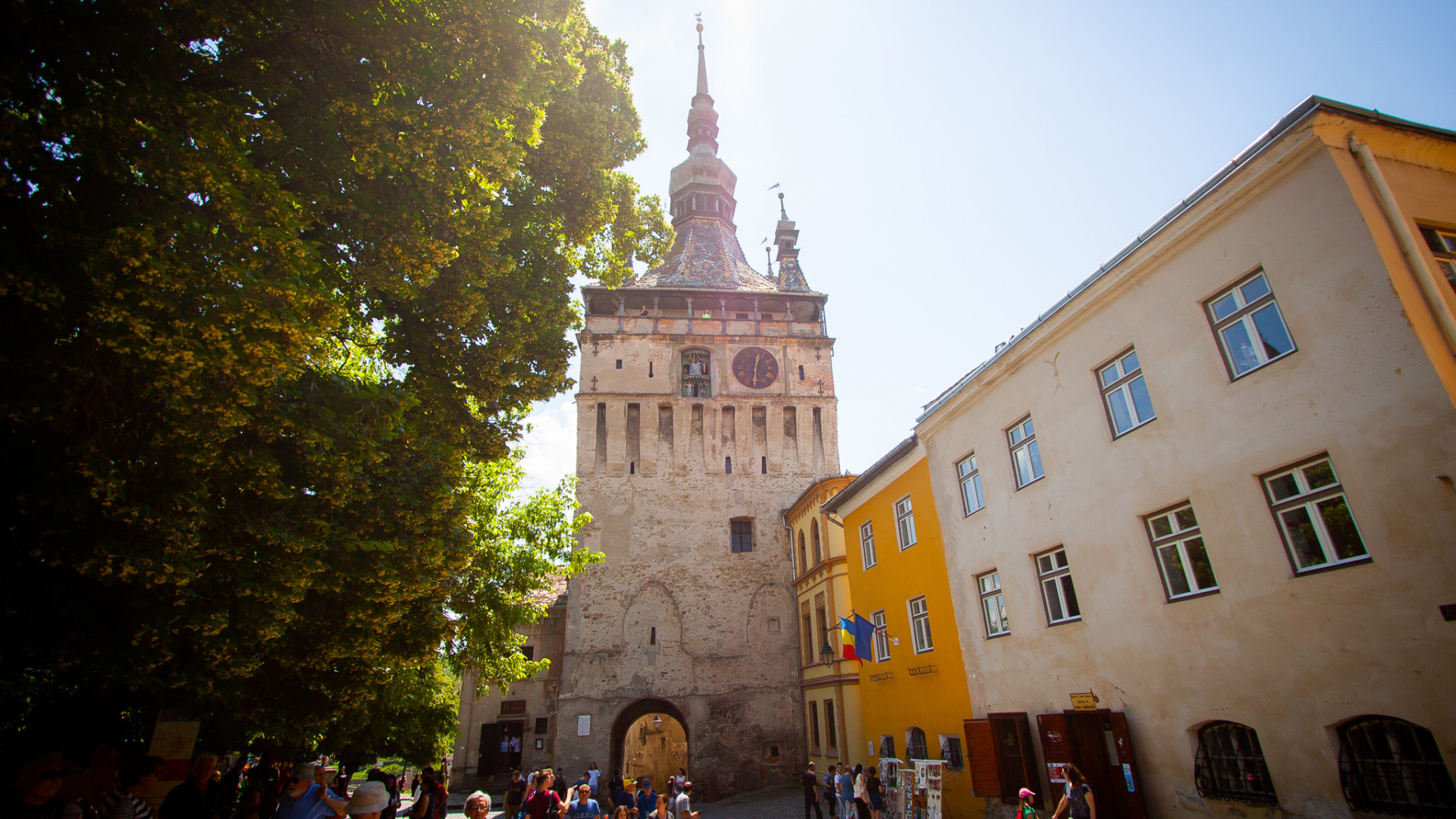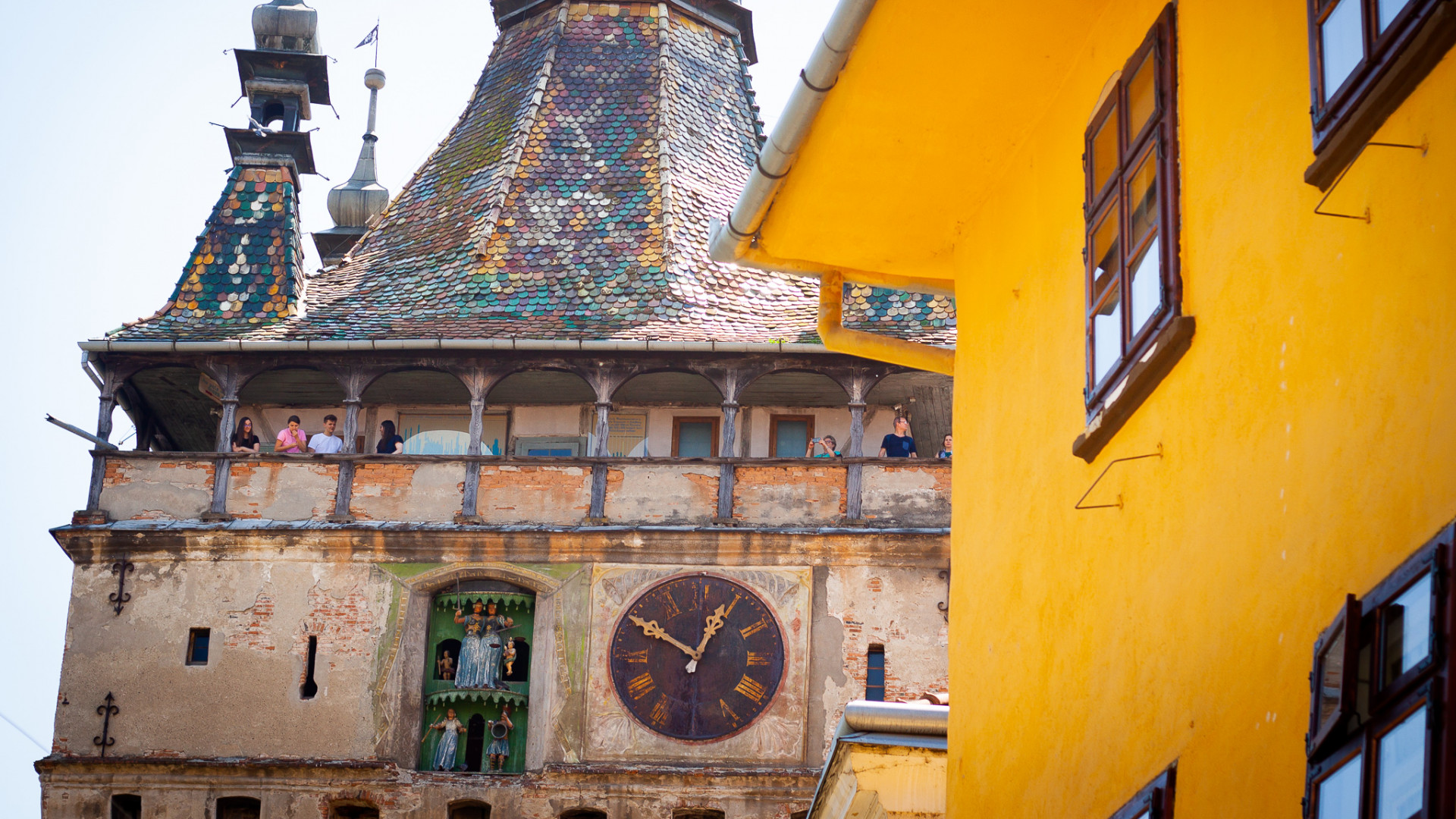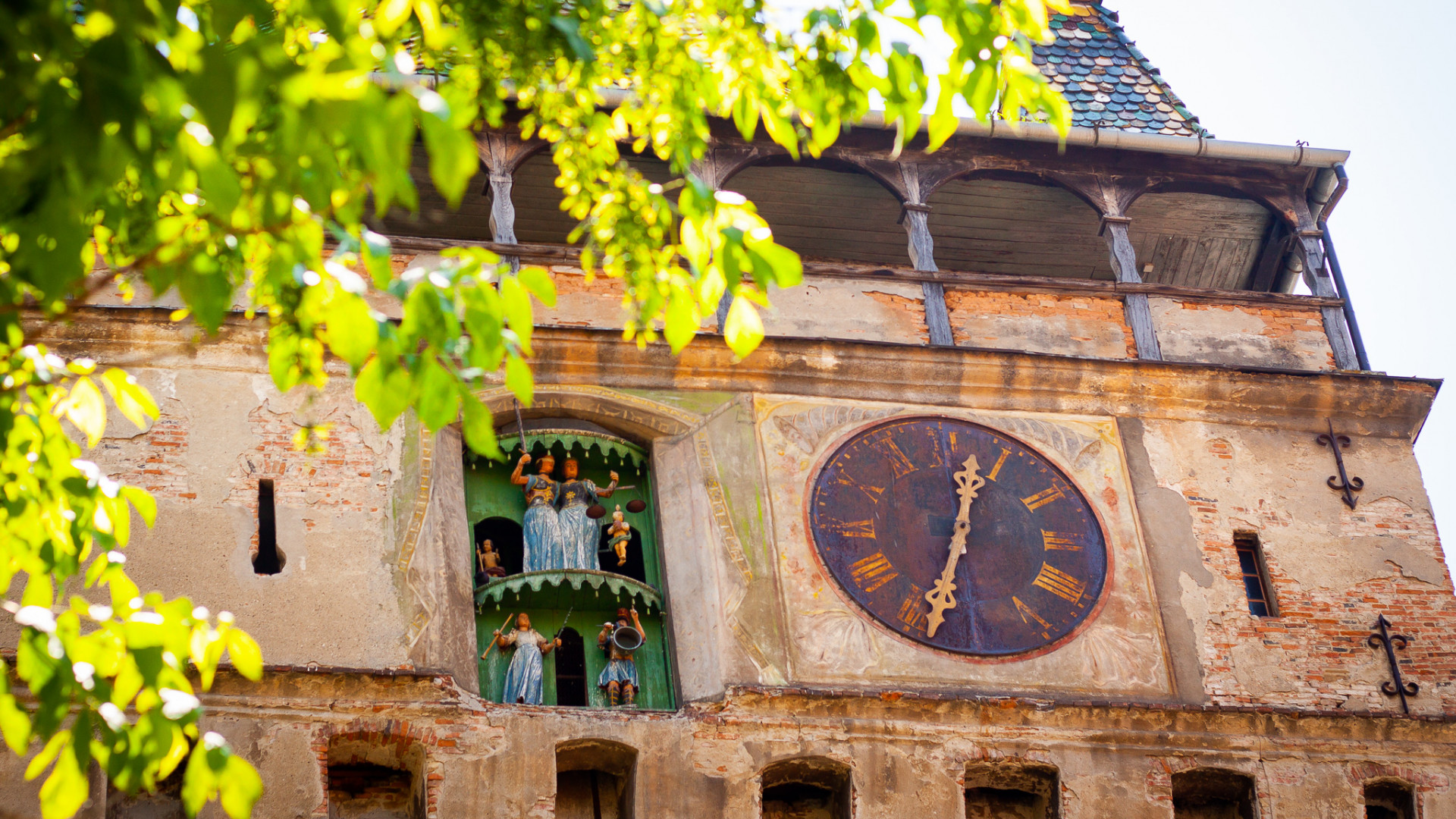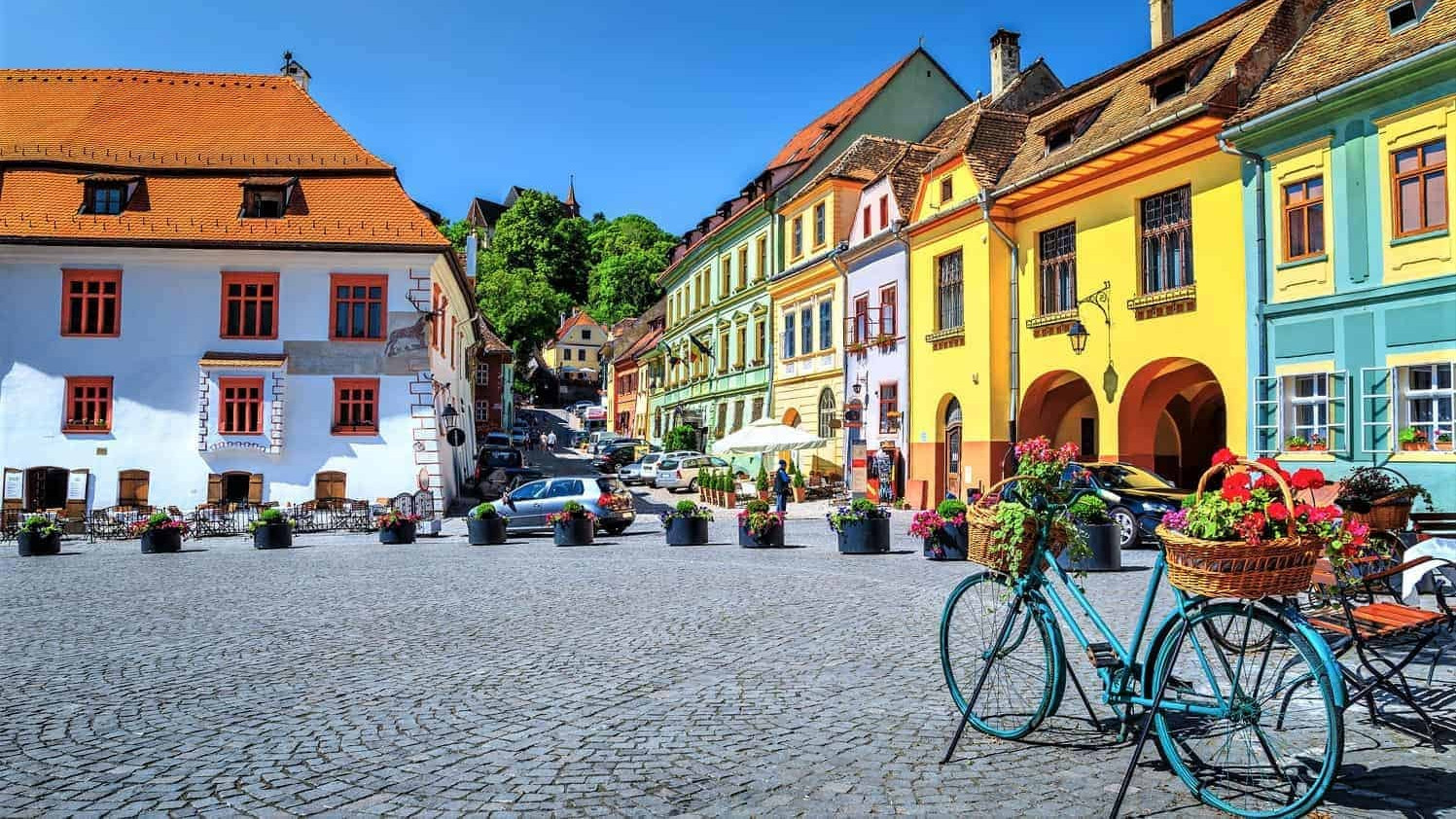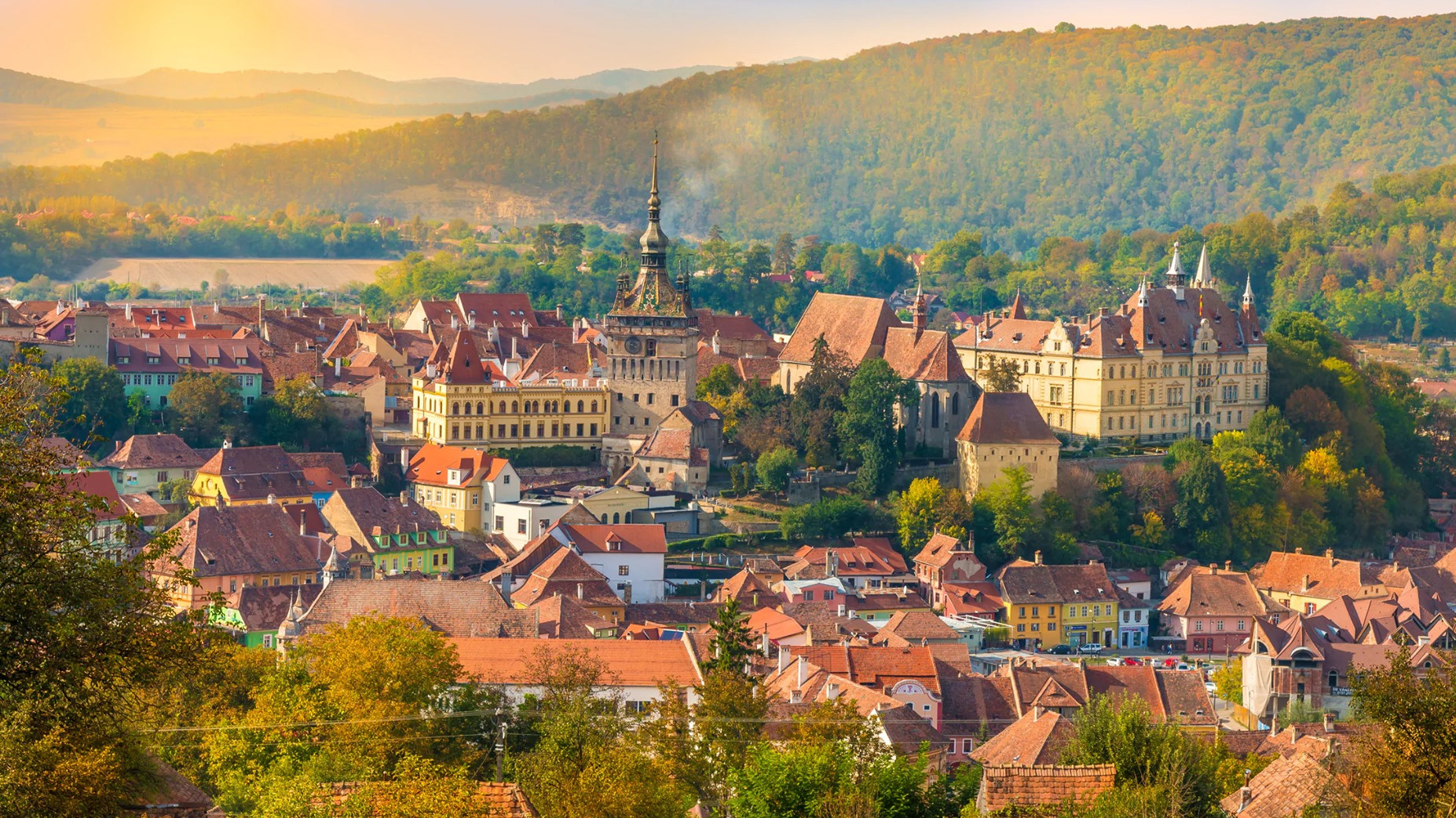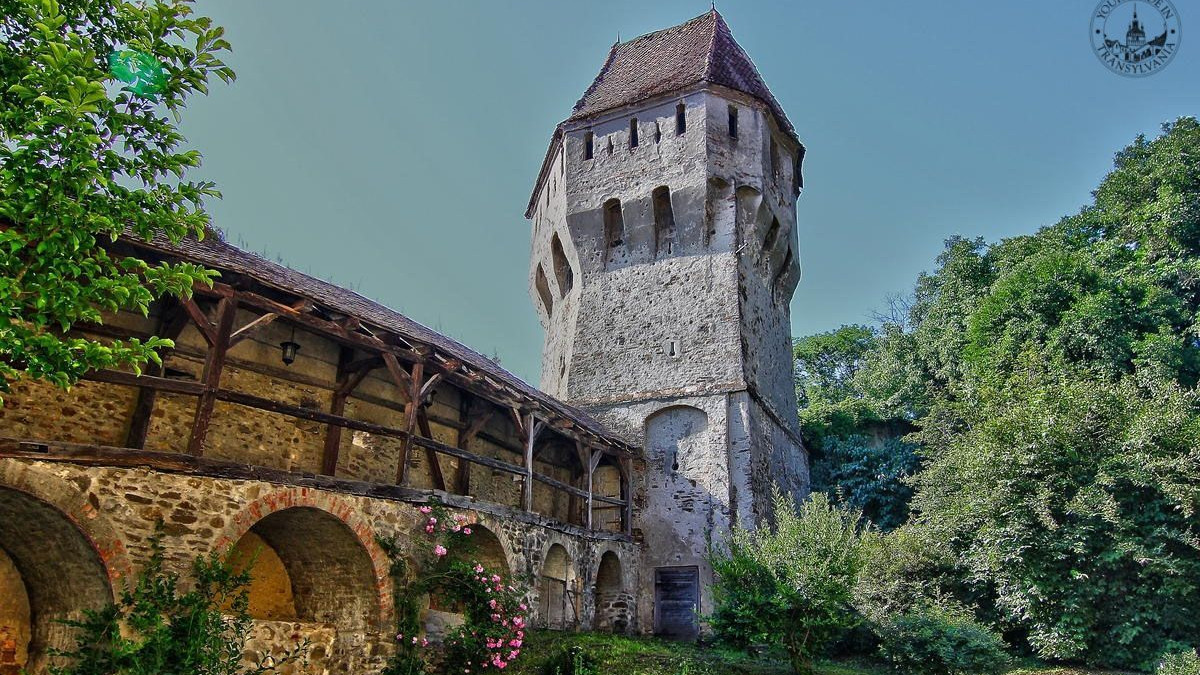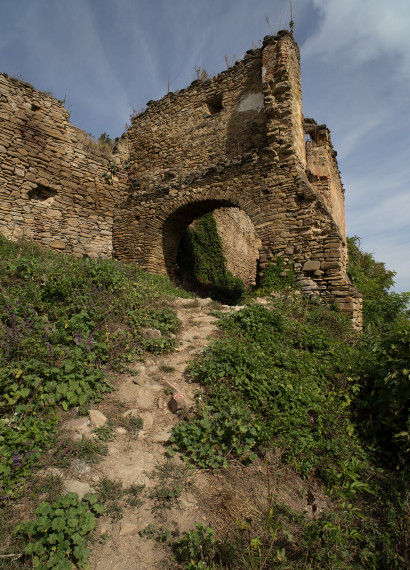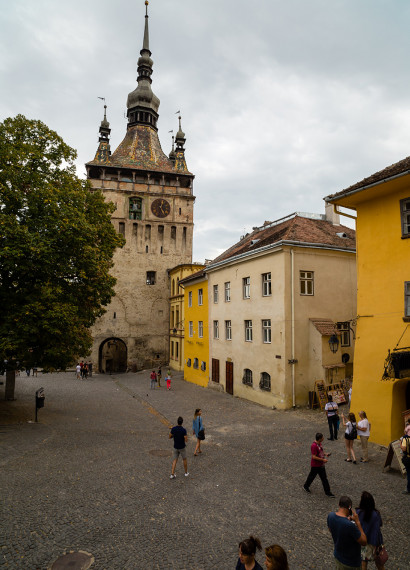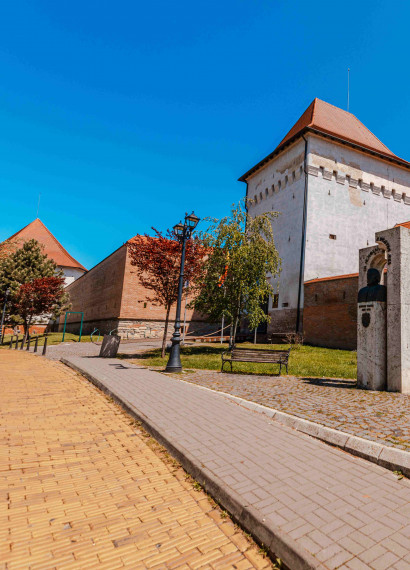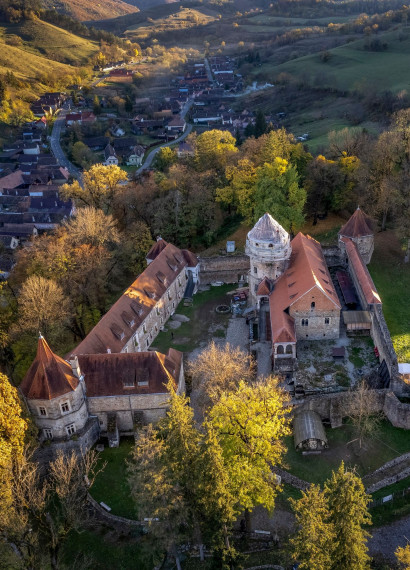Medieval Citadel of Sighișoara
Sighișoara, one of the most beautiful towns in Transylvania, has been an important and inhabited place since ancient times. It was also the site of the Roman fortress of Stenarum, which disappeared during the Migration Period.
The Saxon settlers were invited to colonize this part of Transylvania by King Géza II of Hungary between 1141 and 1161, and granted various privileges, which were confirmed by Endre II in 1224. It became the centre of the Saxon Seat of the same name and was under the jurisdiction of the Saxon Count of Sibiu. The construction of the wooden fortress began in the very end of the 12th century, but it was destroyed in the Great Tartar Invasion of 1241 and a new one was built to replace it. It is first mentioned in a charter of 1280 by the name of Castrum Sex, as a royal estate. The upper part of the Citadel Hill, the Upper Town, gradually reinforced with ramparts and towers, was the centre of the town until the 16th century, with three fortification systems and 14 defense towers.
The main entrance to the citadel, the 64-metre-high rectangular gate of the Clock Tower, is the symbol of the city. This tower was defended not by the guilds, as the towers usually were, but by the soldiers of the council, which used the tower as its seat until 1556. The tower, built in the 14th century, was rebuilt after the great fire of 1676.
Since 1999, Sighisoara Citadel has been a UNESCO World Heritage Site and is the venue for numerous cultural events, including classical music, jazz, medieval, inter-ethnic, folk dance and film festivals. Its attraction is enhanced by its medieval townscape, its towers, the former Dominican monastery church, its cobbled streets, its old houses, its Gothic church, its Lutheran cemetery, its 172-stepped covered wooden staircase built in 1642.
The Saxon settlers were invited to colonize this part of Transylvania by King Géza II of Hungary between 1141 and 1161, and granted various privileges, which were confirmed by Endre II in 1224. It became the centre of the Saxon Seat of the same name and was under the jurisdiction of the Saxon Count of Sibiu. The construction of the wooden fortress began in the very end of the 12th century, but it was destroyed in the Great Tartar Invasion of 1241 and a new one was built to replace it. It is first mentioned in a charter of 1280 by the name of Castrum Sex, as a royal estate. The upper part of the Citadel Hill, the Upper Town, gradually reinforced with ramparts and towers, was the centre of the town until the 16th century, with three fortification systems and 14 defense towers.
The main entrance to the citadel, the 64-metre-high rectangular gate of the Clock Tower, is the symbol of the city. This tower was defended not by the guilds, as the towers usually were, but by the soldiers of the council, which used the tower as its seat until 1556. The tower, built in the 14th century, was rebuilt after the great fire of 1676.
Since 1999, Sighisoara Citadel has been a UNESCO World Heritage Site and is the venue for numerous cultural events, including classical music, jazz, medieval, inter-ethnic, folk dance and film festivals. Its attraction is enhanced by its medieval townscape, its towers, the former Dominican monastery church, its cobbled streets, its old houses, its Gothic church, its Lutheran cemetery, its 172-stepped covered wooden staircase built in 1642.
